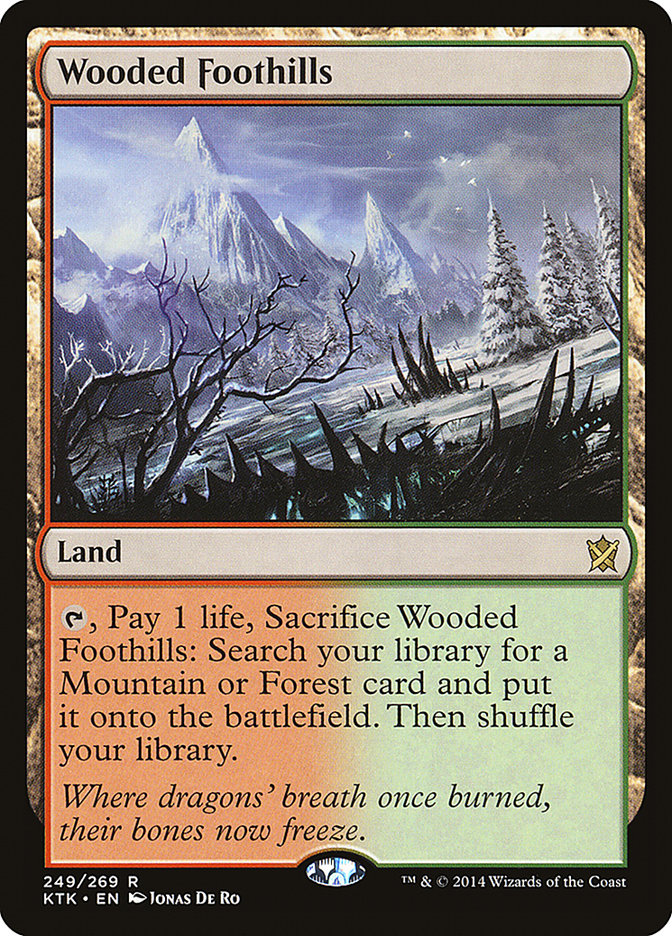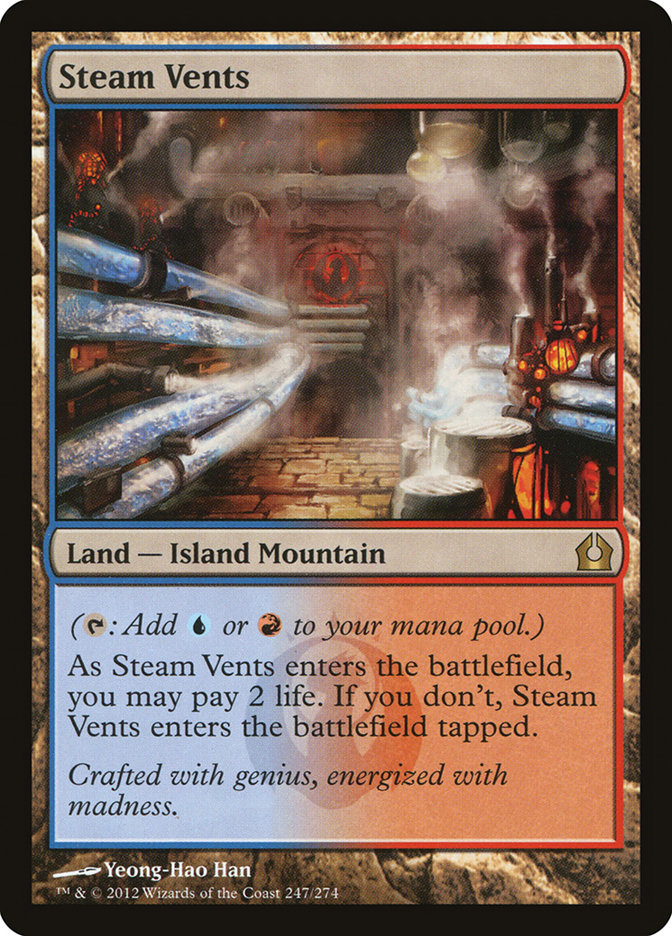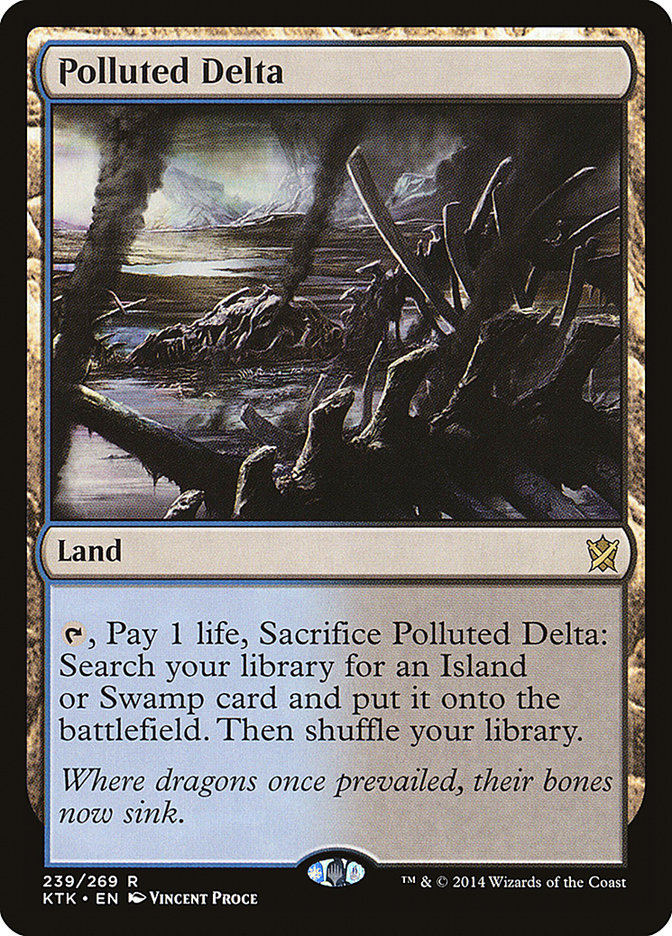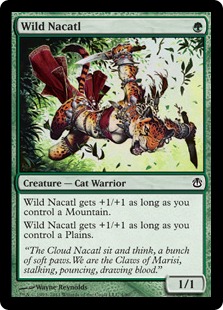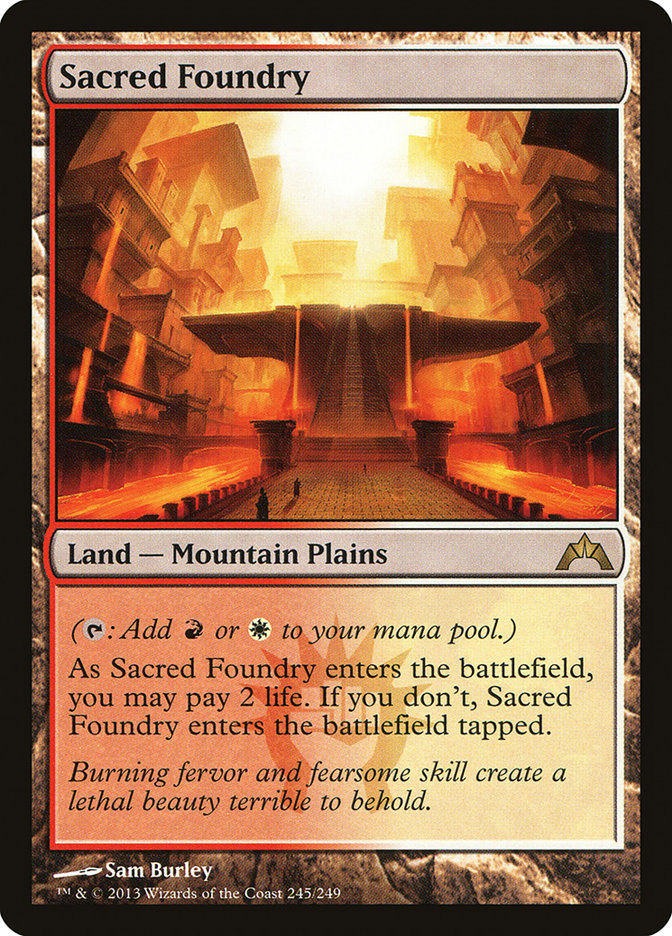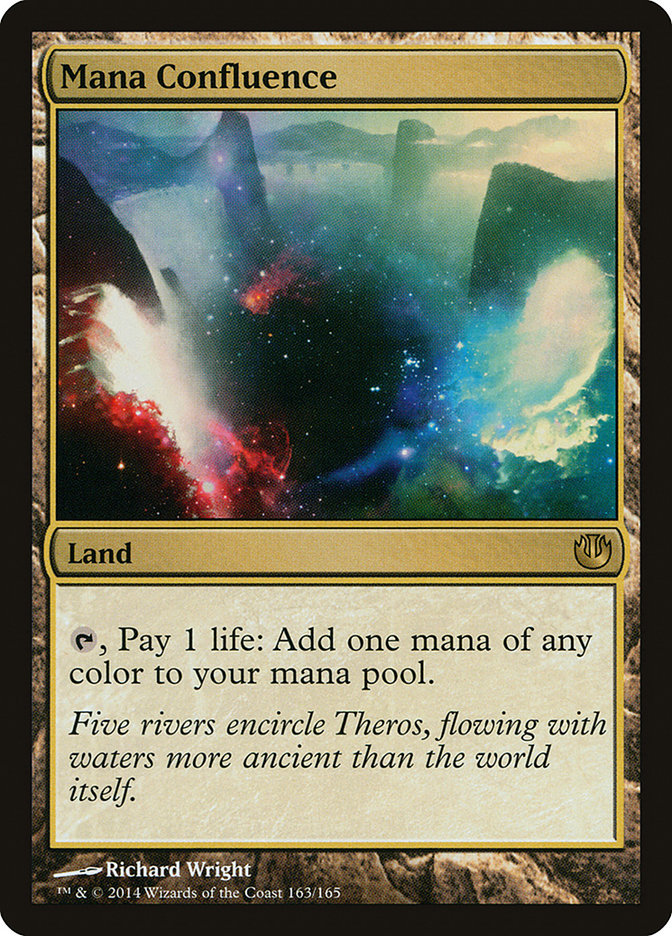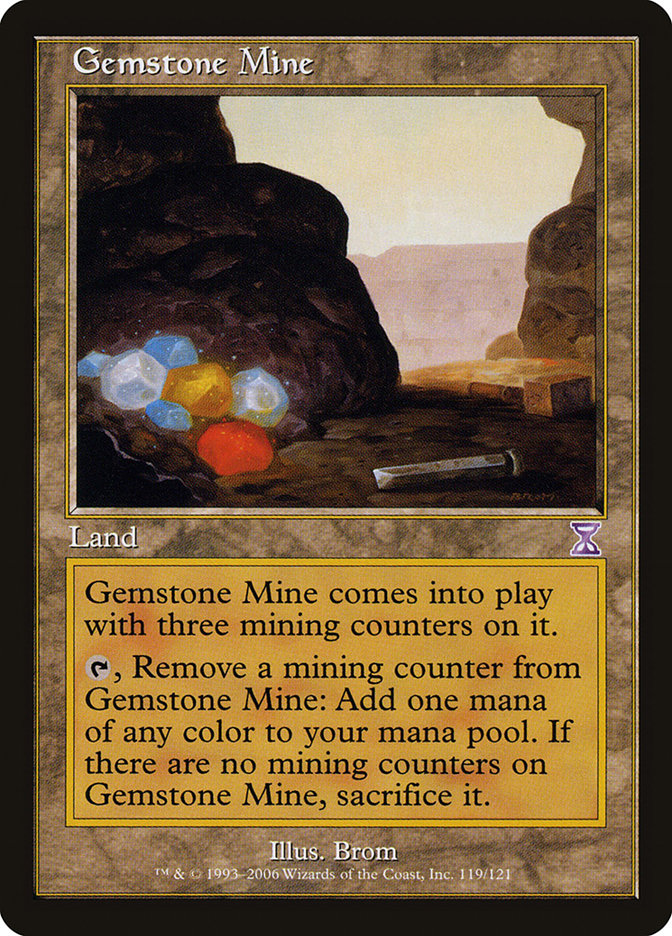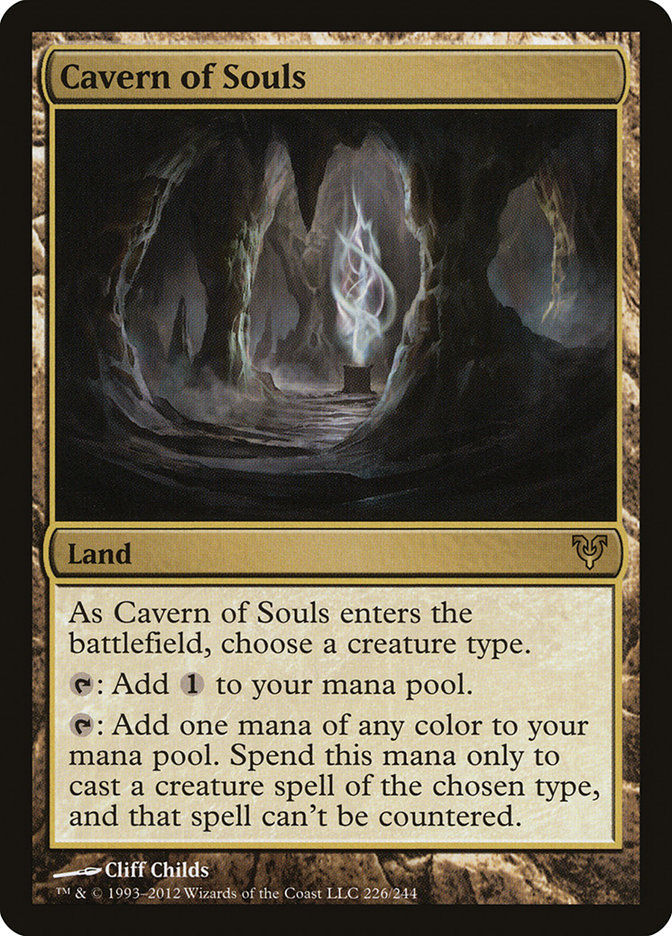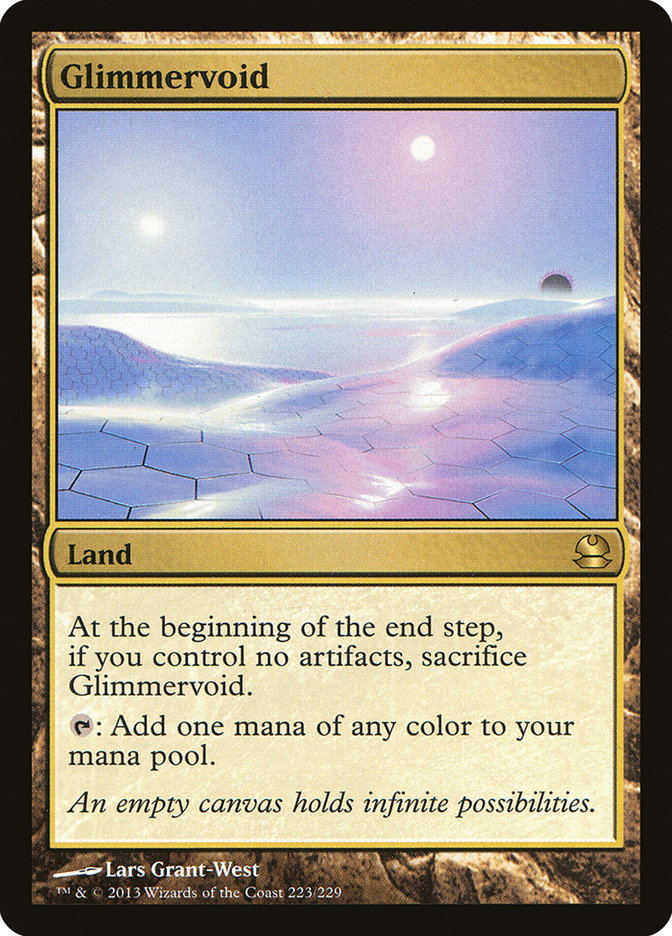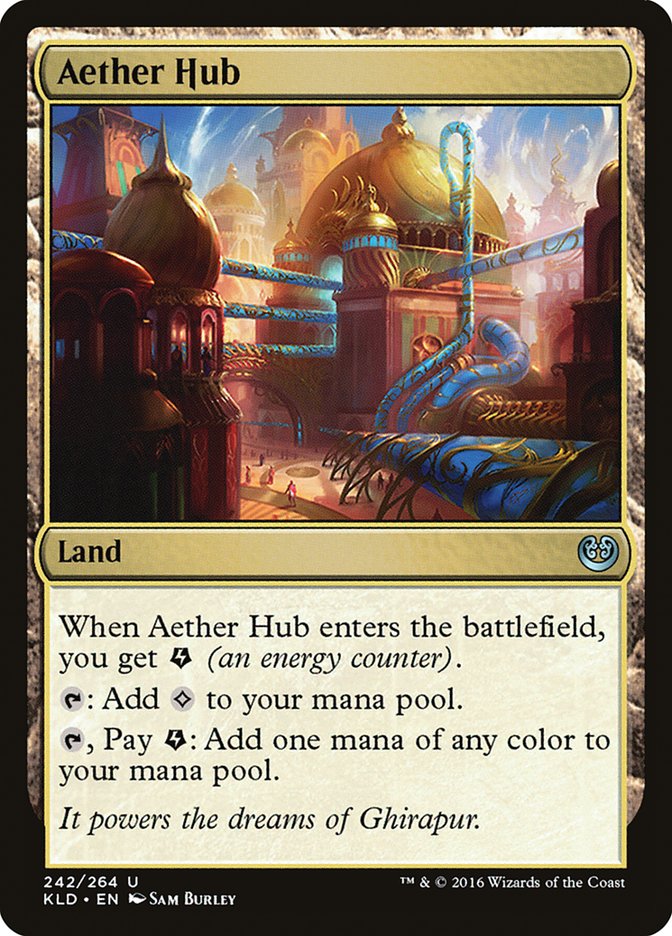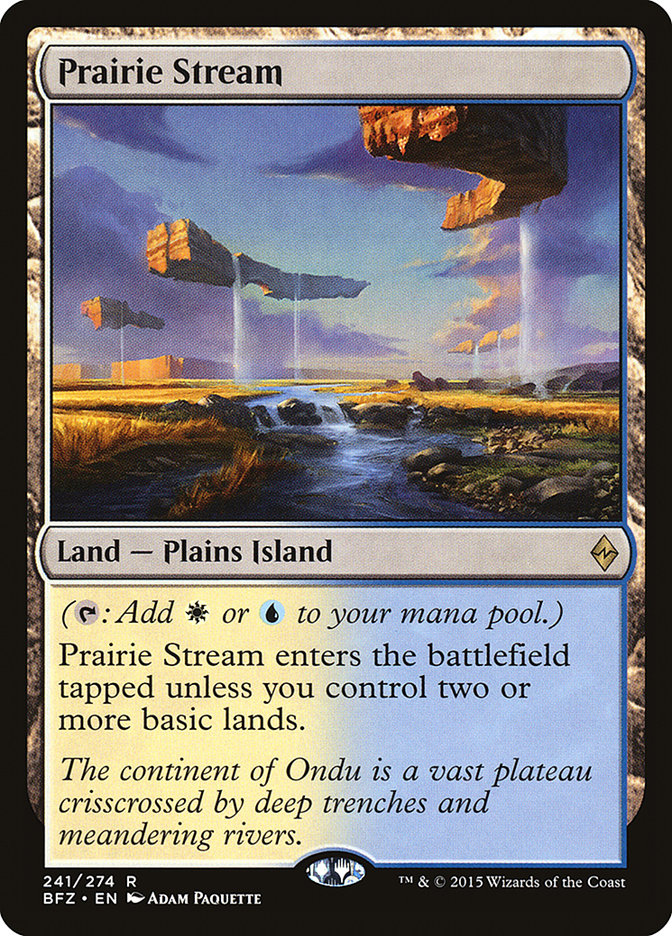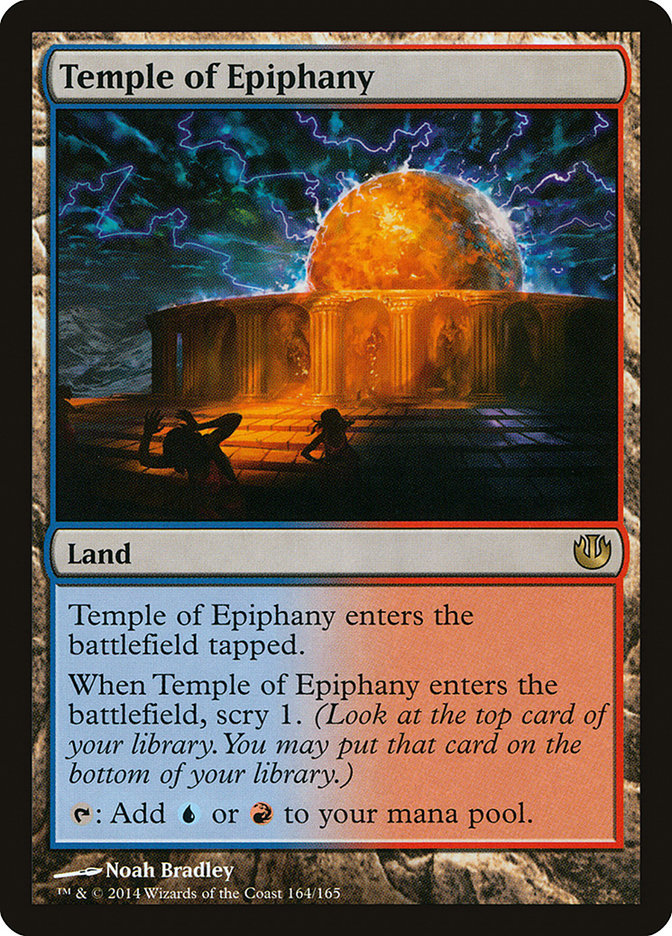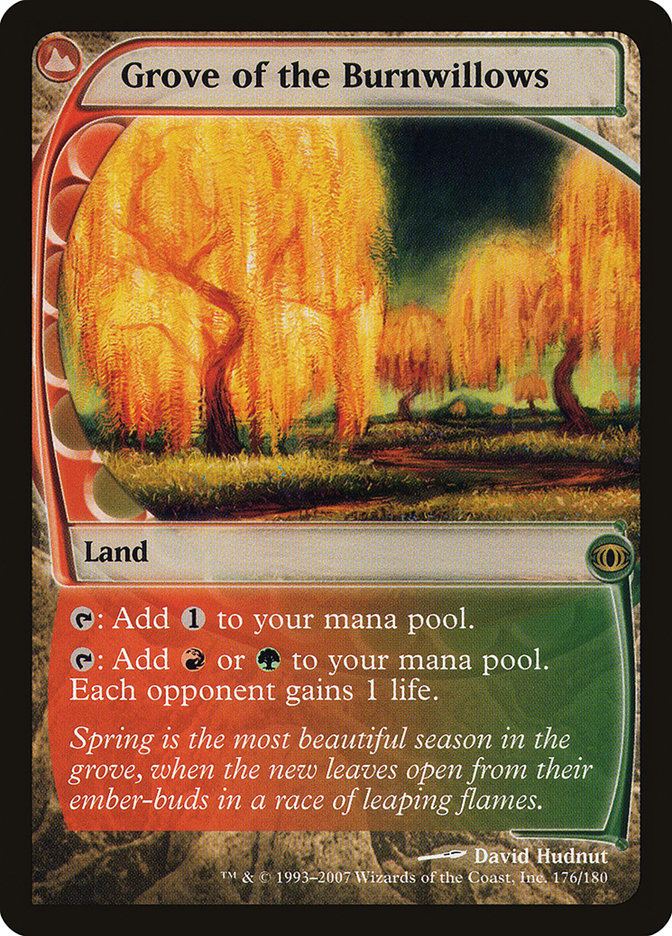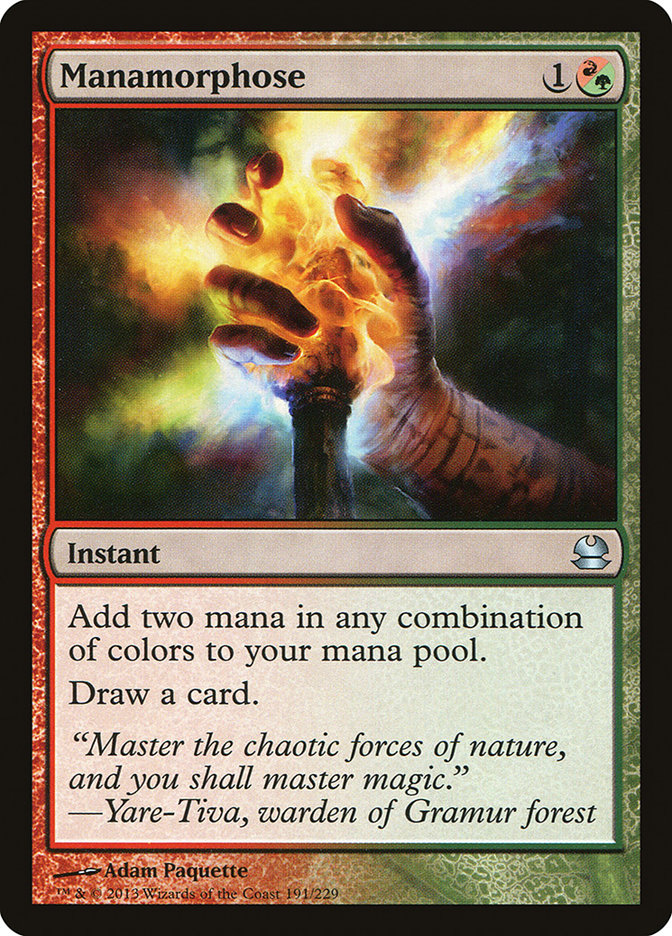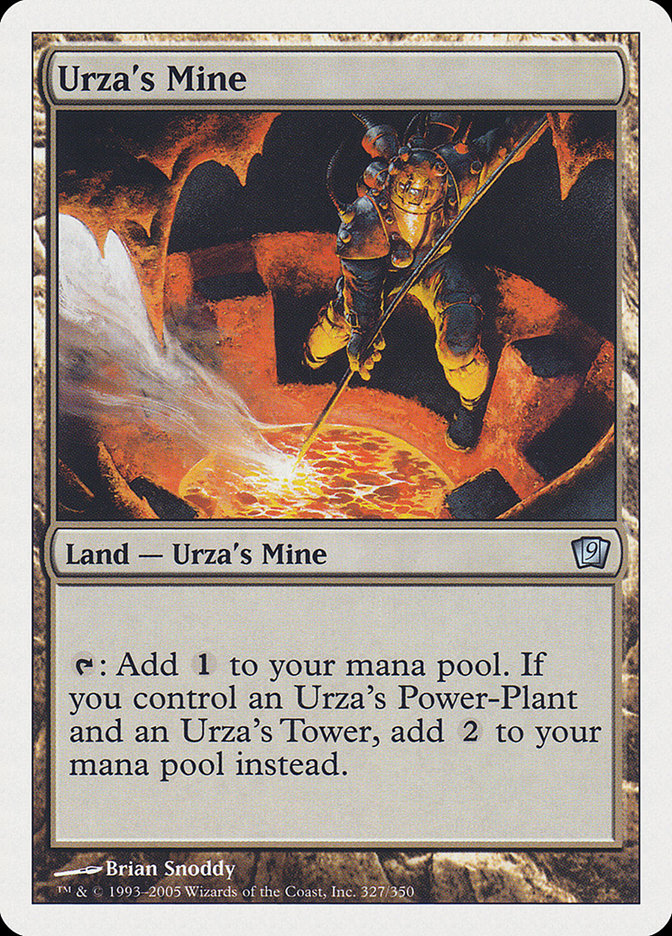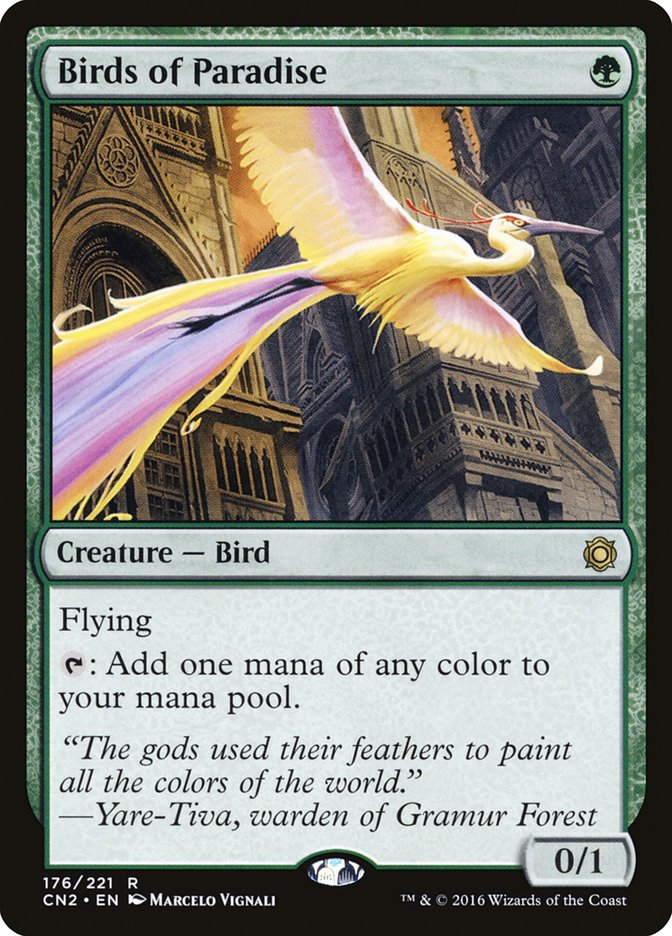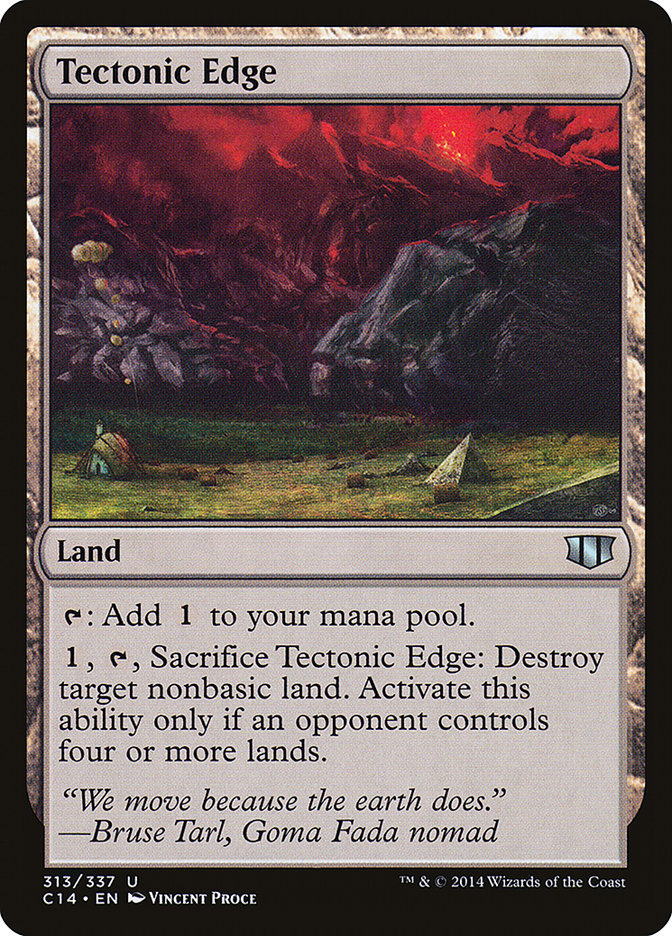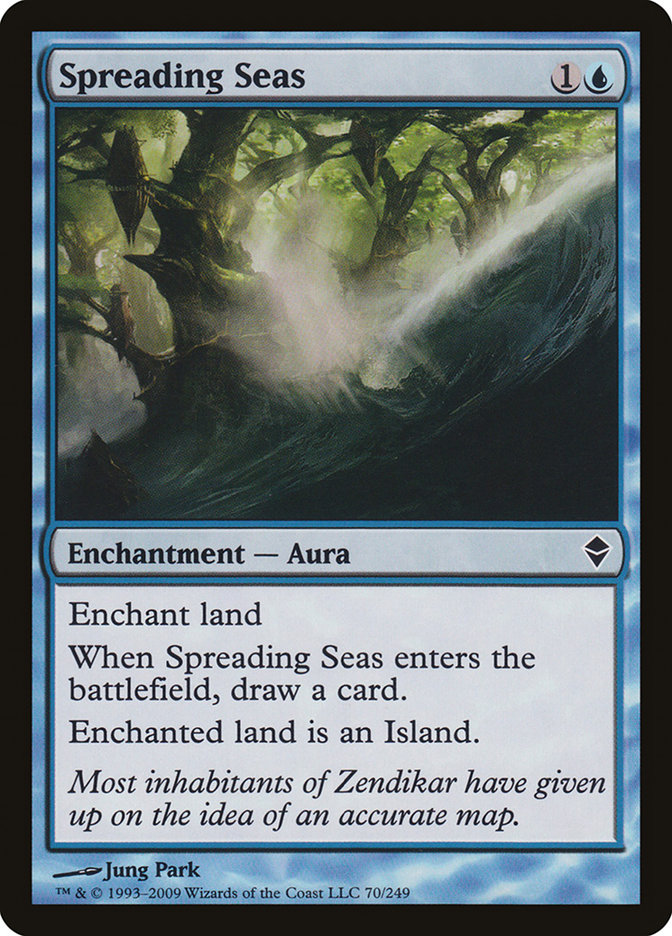Mana is the lifeblood of Magic. It is what allows us to cast our spells and directs us in the style of play we will be able to take. Each color has its own strengths and weaknesses, and when you combine colors together, you create a higher level of complexity and possibility.
In Modern there are a few monocolored decks, but many decks use three or more colors. I’d like to talk about the boons and banes of playing more than one color. There are also costs associated with playing more colors, most commonly paying life to fix your mana or having lands enter the battlefield tapped.
Fetchlands
There are many options when it comes to multicolor lands and mana fixing, but the most common one found in Modern is the fetchland/shockland manabase. Fetchlands (or “fetches”) are a large part of what makes multiple-color decks possible in Modern. Without them, it is much harder to reliably have access to all of the colors you need at the right time.
Decks like Jund are said to have very greedy manabases. They are looking for black mana on turn 1, green or red and black on turn 2, and then double black on turn 3. This means that they must have the right combination of lands in order to cast the optimal spells in the early-game. Without fetchlands, the consistency of having each of their colors in a timely manner is very low.
Creatures (13)
Planeswalkers (4)
Lands (24)
Spells (19)

Fetchlands also have other uses, such as thinning your deck so you are less likely to draw lands later in the game. This can help you have more threat-dense draws when it matters the most. You can also use fetchlands to shuffle your deck. If you see the top card of your library and do not want to draw that card, you can shuffle it back into your library. The same works for cards that were placed on the bottom of your library earlier in the game. If you want a higher chance of drawing the cards you placed on the bottom, you can shuffle them into your deck.
Shocklands
Shocklands (“shocks”) are the flip side to fetchlands in Modern. They are the most commonly fetched-for lands and can allow you to get any color you might want off any fetchland, provided you have the right ones in your deck. Naya Burn uses this trick quite often, playing a Stomping Ground and a Wild Nacatl on turn 1 and then using a Wooded Foothills to fetch a Sacred Foundry on turn 2.
Their Wild Nacatl is now a 3/3 and they have access to Path to Exile, Lightning Bolt, Lightning Helix, Atarka’s Command, and many other spells.
Expected Damage
These all sound great, so why wouldn’t everyone want to use fetches and shocks? There is a cost associated with this form of color fixing that is paid with your life total. Every time you crack a fetchland, you pay a point of life, and every time you bring a shockland in untapped, you pay two more points of life. Each one is not a lot of life lost, but when nearly all of your mana comes from these, you start to see your life total go down very quickly.
In the Naya Burn example earlier, they have lost five or six life off their manabase by turn 2, essentially starting the game with fourteen life. A fast aggro deck like Burn can get away with a low starting life total most of the time, but if you are playing against Burn, it can be really bad to jump-start your opponent’s gameplan so much.
Rainbow Lands
Luckily, there are other options. Some lands hurt more or in different ways, and others slow your gameplan down, which can be unmanageable. These sound worse on the surface but can give you a bonus or some other form of advantage. For example, there are several lands that will tap for every color.
Dredge takes the most advantage of rainbow lands, using Mana Confluence and Gemstone Mine to get whatever colors they need. The problem with Mana Confluence is that every time you tap it for mana it will hurt you; you are not able to tap it for colorless mana safely. While Gemstone Mine will tap for any color pain-free, after it is used three times, it is sacrificed. These rainbow lands work well in decks that do not need much mana in the late-game but are trying to always have access to the colors they need in the early-game.
Alternatively, Cavern of Souls and Glimmervoid will tap for any color with different conditions. These lands need to be built around more, being more synergistic with a single deck than they are generically powerful. Aether Hub is great for any color, but can only be used once before it essentially becomes a Wastes.
Cavern of Souls is a tribal land, not in printed type but in use. It can be tapped for any color, but only for the creature type you chose as it entered the battlefield. Luckily, there are several tribal decks in Modern that can take advantage of it.
Glimmervoid sees play in Lantern Control and Affinity. It is dangerous because if you ever have no artifacts on the battlefield at the end of a turn, you must sacrifice Glimmervoid. This encourages you to build around it and only take advantage of it if you are playing with a large number of artifacts.
More Choices
There are some really powerful lands that enter the battlefield tapped but give you an effect upon entering. Scry lands from Theros see play in Ad Nauseam to help filter through their deck for combo pieces. They often do not need much mana in the early-game, so playing a turn behind curve for a scry is more valuable than a shockland would be for them.
The new Battle for Zendikar lands with two subtypes (like Cinder Glade, a “Mountain Forest”) have been seeing play in various Valakut decks. Cinder Glade being fetchable and having the Mountain type while also providing green mana is very helpful in these decks. Now, instead of having four Stomping Grounds as their only “Mountain Forests,” they also have four Cinder Glades. The downside to the Battle for Zendikar lands is that they will enter the battlefield tapped in the early-game, which is when Valakut decks are trying to build up their mana, not play a turn behind.
In my opinion, the coolest two-color land in Modern is Grove of the Burnwillows.
It sees play in R/G Tron, and instead of hurting you when it taps for a color, it instead gives your opponent a point of life. This is bad if you are trying to be aggressive and kill your opponent early, but if you already plan to go to the late game and don’t particularly care how much life your opponent has when you stabilize the game, then this land is great! I really hope to see this land’s cycle completed, giving us “life lands” in every color pair.
Fixing Spells
In addition to using lands to fix the colors of your mana, there are several spells that can help as well. Mox Opal and Springleaf Drum are used by Affinity to great effect but cannot be used in every deck. The same goes for Manamorphose.
It works very well in Storm and Nivmagus Elemental decks, but you have to be able to cast it with red or green mana first in order to make any color you want. The other big problem with mana-fixing spells like Manamorphose is that they can only be used once and then are in the graveyard.
Ramp
Another theme you will find in Modern is ramp. There are several decks that are built around ramping up to large amounts of mana to play ahead of curve. Tron is the classic big ramp deck, but Valakut decks have been on the rise lately as well.
In Tron you see the namesake of the deck in the “Urzatron” lands. These are colorless lands that tap for one mana most of the time, but if you have a complete set, they will tap for two or three. It also ramps with Expedition Map, Sylvan Scrying, and sometimes with Ancient Stirrings. Valakut uses spells that search up and play extra lands in a turn, such as Search for Tomorrow and Farseek.
Mana Creatures
There are many creatures that can tap for mana as well, the most commonly played being Noble Hierarch and Birds of Paradise.
These are both ramp and color fixing and see play in many decks. If you are playing mostly green, you also gain access to ramp with Elvish Mystic and Llanowar Elves.
Land Hate
With all of these wonderful options for mana and mana fixing, you also need to be careful of land hate. There is land destruction like Tectonic Edge that will leave you behind on mana, but there are also color-hate cards. Most popular right now is Blood Moon.
For most Modern players, just reading Blood Moon made you shiver a bit. It may be the most hated card in the format right now. Many decks are running a large number of nonbasic lands which are turned into Mountains by Blood Moon. You can fetch for basic lands if you expect a Blood Moon to be played, but it is still hard to make a deck work when many of your color sources that you rely on are now all red.
Other similar effects that see play are Spreading Seas. These target a specific land and can be used to “color screw” an opponent. If your opponent only has one source of a specific color available, assuming that color is not blue, you can cut them off of that color and turn it into an Island. While this generally isn’t as bad as Blood Moon, it can still be devastating to lose access to the colors of mana you need.
When Is It Worth it?
With all the damage you do to yourself and the danger of land hate, when is it worth it to play extra colors? It can be hard to determine where the balance is for the deck you are playing. Think about the added value you are getting for that extra color. Is it worth the hit to color consistency and to your life total? Sometimes adding another color can be a good idea, but it is not always a good call.
Where do you draw the line? Do you like playing four- and five-color decks, or are you more like me, preferring the consistency of one or two colors? Let me know what you all think, and as always, happy gaming!


